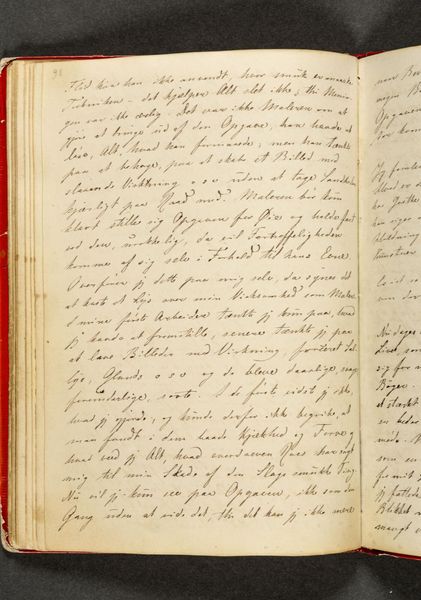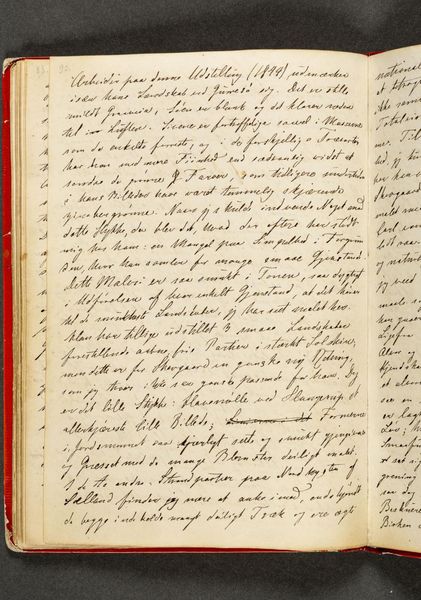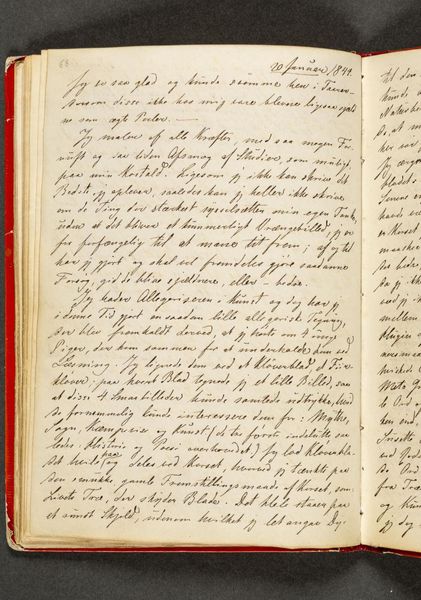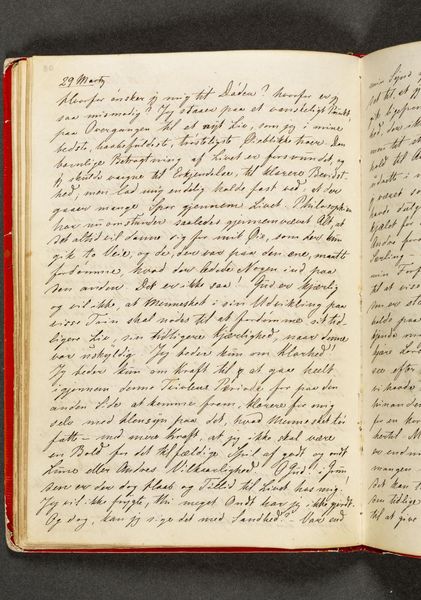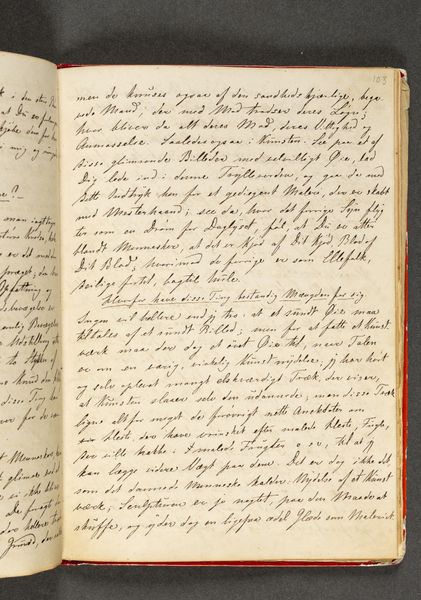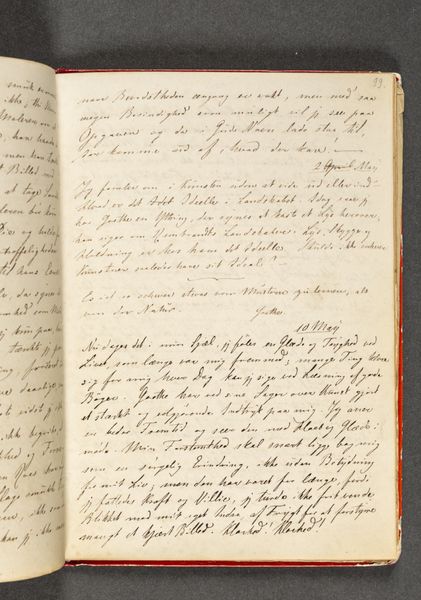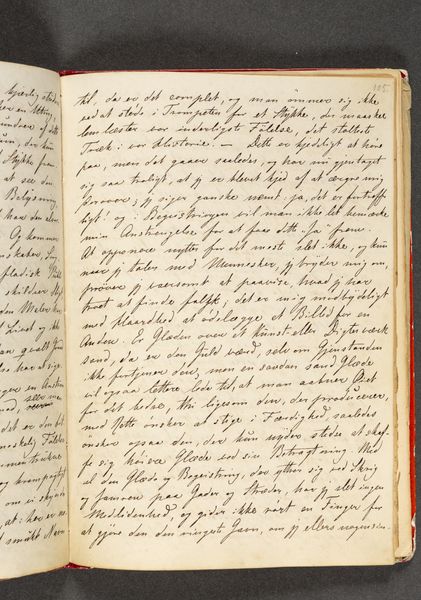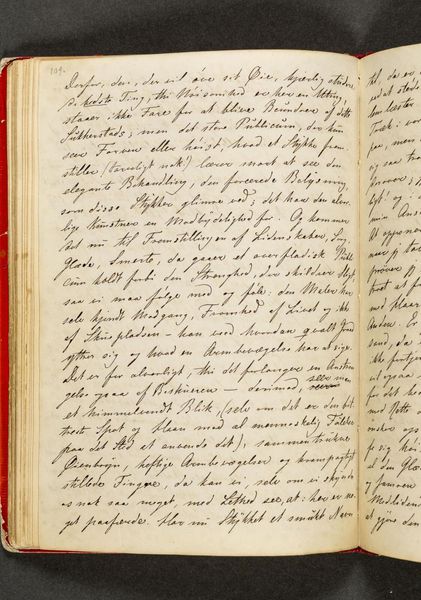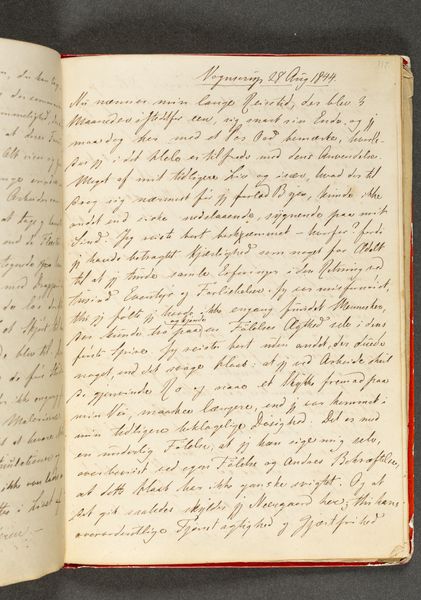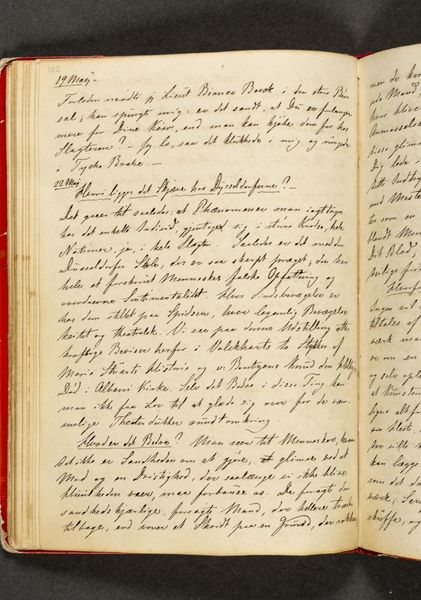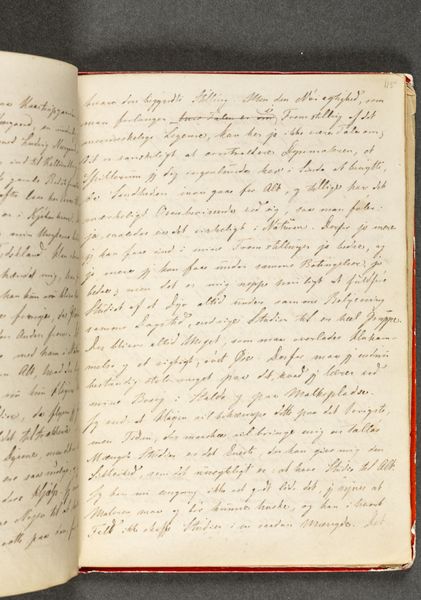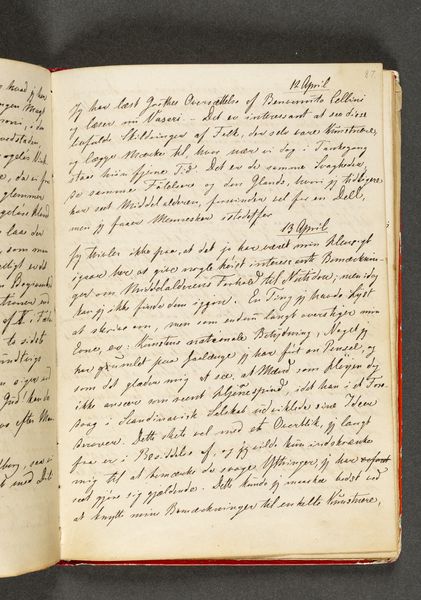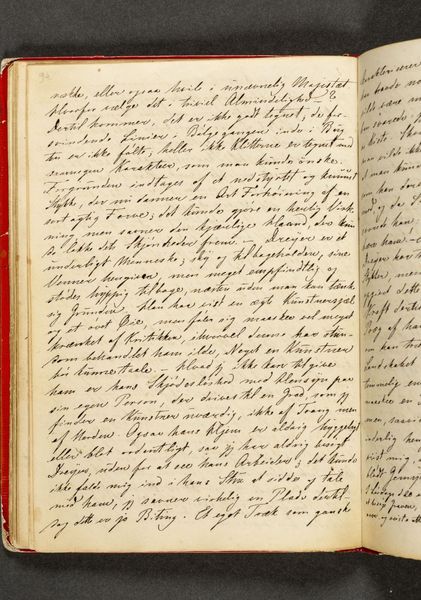
drawing, paper
#
drawing
#
medieval
#
paper
#
romanticism
Dimensions: 192 mm (height) x 133 mm (width) (bladmaal)
Editor: "Dagbog. Side 100", or "Diary. Page 100," by Johan Thomas Lundbye, dated 1844. It looks like a handwritten journal entry on paper. The script is very dense and kind of hard to make out, and there's something intimate about the cramped writing – like peering into someone's private thoughts. What do you see in this piece? Curator: Ah, Lundbye. With his diaries, he invites us into the very atelier of his mind. This isn't just any diary entry, is it? See how the words almost vibrate on the page? For me, that script feels like a flurry of ideas, struggling to be born. A constant revision, one layer obscuring the next. What do you make of the apparent references to "Maleriet", or "painting" amongst those frenetic lines? I see this entry not as simple notes, but as his attempt to wrestle thought into form, almost sculptural in its intensity. He doesn’t separate thinking from making, does he? Editor: That makes a lot of sense. I initially saw it as simply writing, but framing it as "wrestling thought into form" gives the artwork an energy I didn't pick up on before. Curator: Precisely! We're seeing the raw material of art *in process.* A glimpse into the engine room, if you will. This reminds us that what we often deem to be spontaneous moments are, in fact, the culmination of sustained engagement and intense focus. Editor: So, not just words, but an insight into the artist’s creative process… That's definitely a new way of looking at it. Curator: Precisely. Diaries remind us of how important artistic preparation is.
Comments
No comments
Be the first to comment and join the conversation on the ultimate creative platform.
